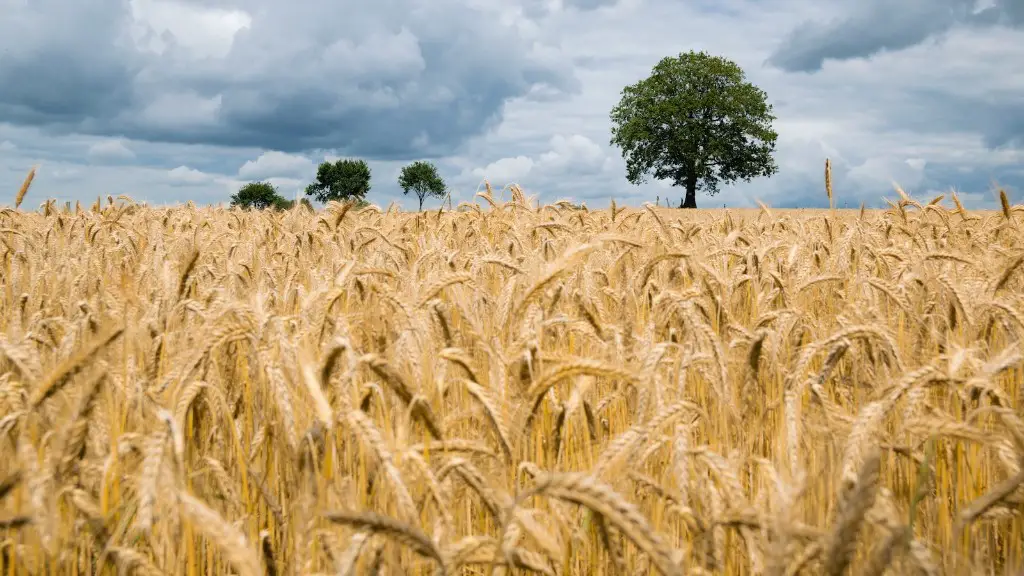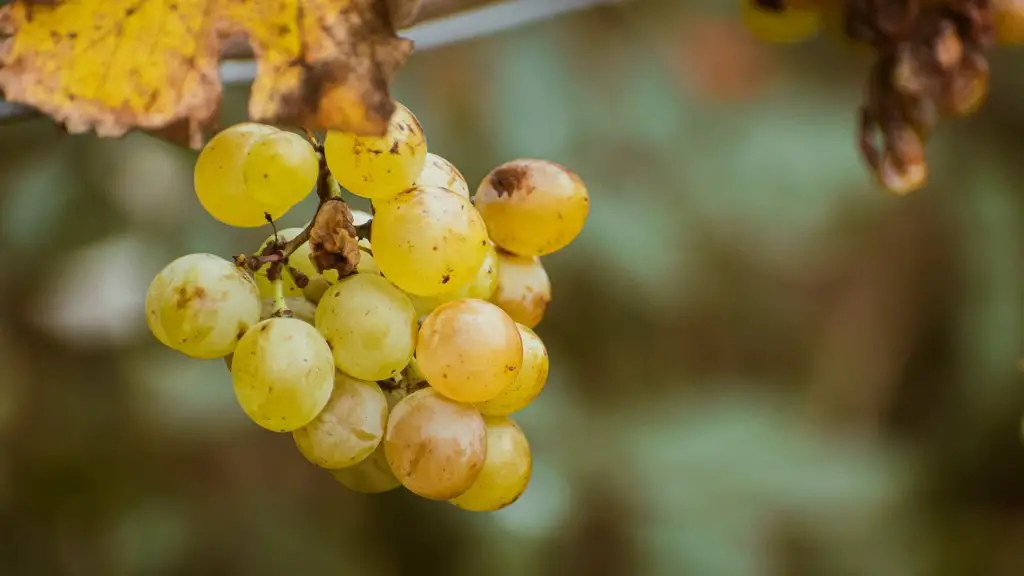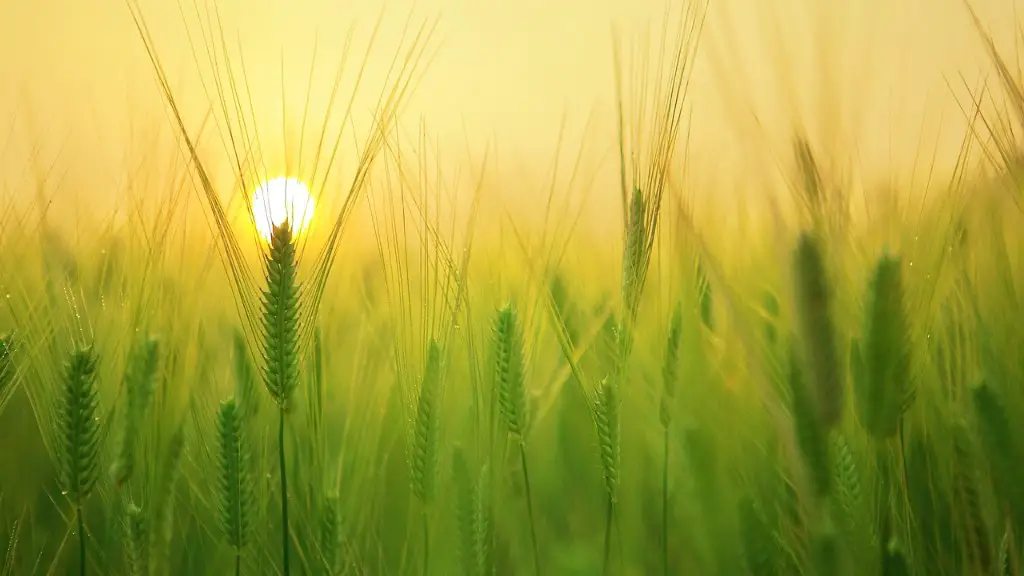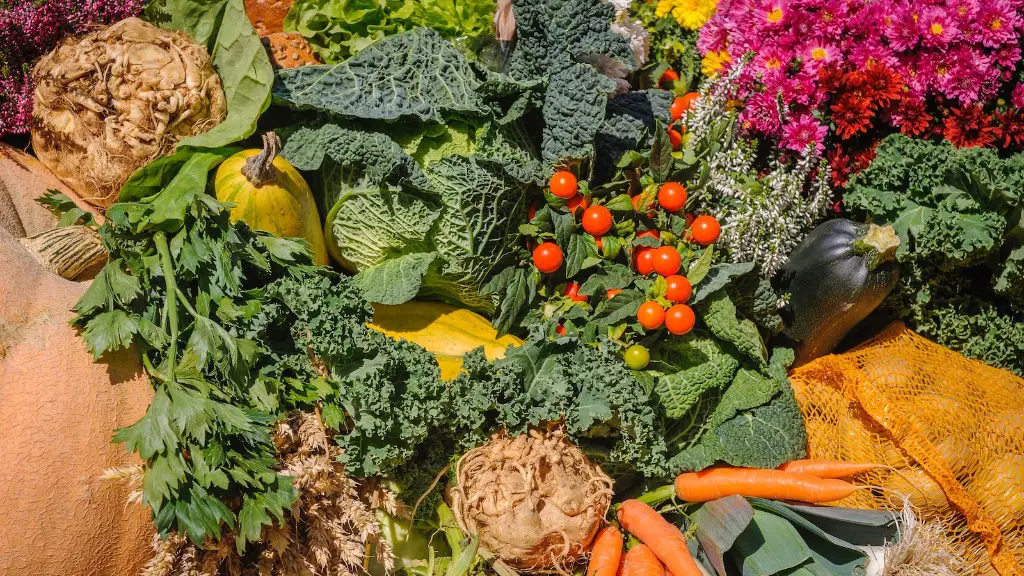This article outlines the various ways in which water-saving techniques can be implemented in agricultural contexts. Water is an essential resource for crop growth and to ensure economic stability in an agricultural sector, it is important to ensure efficient utilisation of this precious resource. Water saving can be achieved through a number of measures such as increasing soil fertility, improving irrigation systems and using drought tolerance crop varieties.
Firstly, soil fertility needs to be improved by incorporating organic matter into the soil. Organic matter can help enhance soil structure and improve water uptake, making it easier for crops to access it. This can result in increased yields and reduced water use. Additionally, green manuring and cover cropping can help improve soil fertility by replenishing soil with valuable nutrients and increasing organic matter levels.
Secondly, improved irrigation systems can help conserve water as it allows water to be applied directly on target areas and crops. This makes it possible to reduce over-watering and control water wastage by delivering water with precision. Additionally, irrigation management practices such as sprinkler irrigation, surface irrigation and water harvesting can help improve the efficiency of water use in agriculture.
Thirdly, farmers need to utilise crop varieties which are drought-tolerant and require less water. This can help reduce the demand for water and make it easier to conserve it. Additionally, farmers can implement water-saving methods such as drip irrigation and sub-irrigation which can effectively reduce water use without compromising crop yields.
Lastly, adopting smart agricultural practices such as using water-saving fertilizers and pesticides and using rainwater for irrigation can help reduce water wastage and ensure efficient utilization. Additionally, using soil sensors which provide a real-time view of moisture levels can help farmers adjust their water use accordingly.
Using Drought Tolerance Crops
In order to reduce the demand for water and make it easier to conserve, farmers need to utilise crop varieties which are drought-tolerant and require less water. This can reduce the amount of water used while also increasing crop yields. Growing drought tolerant varieties can help reduce losses due to water stress and can help preserve scarce water resources.
Some of the drought tolerant crop varieties include hybrid maize, sorghum, pearl millet, and groundnut. These crops require less water and are adapted to the local climate, making them ideal for water-scarce regions. Additionally, increased use of hybrid crops can also benefit farmers by providing higher yields and better market prices.
Furthermore, using water-efficient crop varieties can help conserve water. This can be achieved by using varieties that require less water to produce, such as early maturing varieties which have a shorter growing season, or low water-use varieties which reduce evaporation losses through their deep root systems. Additionally, farmers can use cover crops to complement their water-efficient varieties, as cover crops help reduce evaporation and conserve moisture.
Overall, using drought-tolerant crop varieties can help reduce water wastage and conserve water resources. Additionally, it can also help farmers to maximise their yields and increase their income.
Improving Soil Fertility
In order to improve water utilisation, it is important to focus on improving soil fertility. Soil fertility can be improved through incorporating organic matter into the soil and this can help enhance soil structure and improve water absorption. This can result in increased water availability for crops, in addition to aiding in nutrient uptake.
Organic matter can be introduced into the soil through a variety of methods, such as green manuring and intercropping. Green manuring is a process in which farmers grow nitrogen-fixing crops in one or more plots and then these crop residues are ploughed back into the soil, enriching it with valuable nutrients. Additionally, the use of cover crops can also help restore the fertility of the soil, as they help to prevent erosion, increase biological activity in the soil, and add organic matter.
Moreover, composting is another effective way of improving soil fertility. Composting is a process where organic matter is broken down by microorganisms and is then incorporated into the soil. This helps to replenish soil with essential nutrients, improve soil structure, and can help crops to access available water more efficiently. Additionally, the use of mulch can also help conserve water as it acts as a cover which helps to reduce evaporation losses and can help improve water absorption in the soil.
In conclusion, improving soil fertility is a key component of water-saving efforts in agriculture as it can result in increased water availability for crops. Furthermore, it can also reduce nutrient losses from the soil, thereby improving soil health and fertility, and ultimately leading to greater crop yields and improved economic stability for farmers.
Improving Irrigation Systems
Improving irrigation systems is key to ensuring efficient water use in agriculture. Improved irrigation systems can allow water to be applied directly to target areas or crops, thereby reducing over-watering. Additionally, improved irrigation systems can help farmers to save water and reduce water wastage.
Sprinkler irrigation is one of the most common forms of irrigation systems used in agriculture. It is widely used as it is efficient in water application and can accommodate difficult topography, although it can be expensive to implement. Furthermore, surface irrigation is another efficient method of irrigation, as it is suited for areas with flat topography and enables efficient uniform water application. Additionally, water harvesting systems such as drip irrigation and sub-irrigation can help conserve water, as these methods release water to target areas in a concentrated manner, therefore optimising water application and reducing wastage.
In addition to improved irrigation systems, the use of soil sensors can be beneficial in monitoring water levels and enabling timely and precise irrigation. Soil sensors are devices which measure moisture levels in the soil and provide real-time data on soil moisture. This helps to improve irrigation management strategies, as farmers can adjust their water use accordingly and thus conserve water.
Overall, improved irrigation systems are essential for improving water uptake and ensuring efficient water utilisation in agriculture. Additionally, the use of soil sensors can also be beneficial in monitoring and improving water applications.
Rainwater Capture and Storage
Rainwater capture and storage is a crucial component of water-saving measures in agriculture. Rainwater can be collected and stored in reservoirs, which can then be used for irrigation when necessary. This can help to reduce demand for water and can reduce dependence on other water sources.
Dug wells, boreholes, and rainwater harvesting tanks are some of the common rainwater storage techniques used. Dug wells are commonly used in rural areas, as they are relatively cheap to construct and are considered an easy method of water storage. Additionally, boreholes are a more advanced method of rainwater capture and storage, as they are deep holes drilled into the ground and lined with PVC pipes and seals to help collect and store water.
Apart from storage techniques, rainwater can also be used directly for irrigation. This can be achieved through the use of water harvesting systems such as drip irrigation systems and furrow irrigation systems, which can help to reduce water wastage and improve water utilisation. Additionally, the use of mulch in combination with rainwater irrigation can help reduce evaporation losses and thus conserve water.
Overall, rainwater capture and storage is a key component of water-saving efforts in agriculture, as it can help to reduce demand for water and can ensure efficient utilisation of this precious resource. Additionally, the use of rainwater irrigation systems can also help to reduce water wastage.
Water Saving Fertilisers and Pesticides
The use of water saving fertilisers and pesticides can help reduce water wastage and ensure efficient utilisation in agriculture. Water saving fertilisers and pesticides can help improve crop yields with minimal water consumption. Additionally, by using water-saving fertilisers and pesticides, farmers can reduce the risk of water pollution and run-off, as these fertilisers and pesticides are not as water soluble as traditional fertilisers and pesticides.
Some of the common water-saving fertilisers and pesticides used by farmers include bio-fertilisers, Neem cake, compost, and vermicompost, which are all natural products with water-saving properties. Additionally, various other slow release fertilisers and non-toxic pesticides can be used to reduce water demand. Furthermore, crop rotation, intercropping, and other agroforestry techniques can also be employed to reduce water demand.
Overall, the use of water saving fertilisers and pesticides can help reduce water wastage and conserve this precious resource. Furthermore, these methods can also reduce nutrient losses and soil degradation, ultimately leading to greater crop yields.
Smart Agricultural Practices
Smart agricultural practices can help to reduce water wastage and ensure efficient utilisation of this resource in an agricultural context. Setting up automatic irrigation systems, using efficient irrigation systems, and using drought-tolerant crop varieties are some of the smart agricultural practices which can help conserve water. Additionally, farmers can also use soil sensors which can provide real-time data on soil moisture and enable timely and precise irrigation.
Furthermore, using water-efficient fertilisers and pesticides can also help reduce water wastage in agriculture. These fertilisers and pesticides are not as water soluble as traditional products and can help to reduce nutrient losses, ultimately leading to greater crop yields. Additionally, integrating agroforestry techniques such as crop rotation and intercropping can also help to conserve water, as they can help to reduce evaporation and conserve moisture.
Overall, smart agricultural practices are essential for improving water utilisation in agriculture. These practices can help to reduce water wastage and conserve this precious resource, while also increasing crop yields and improving economic stability for farmers.





